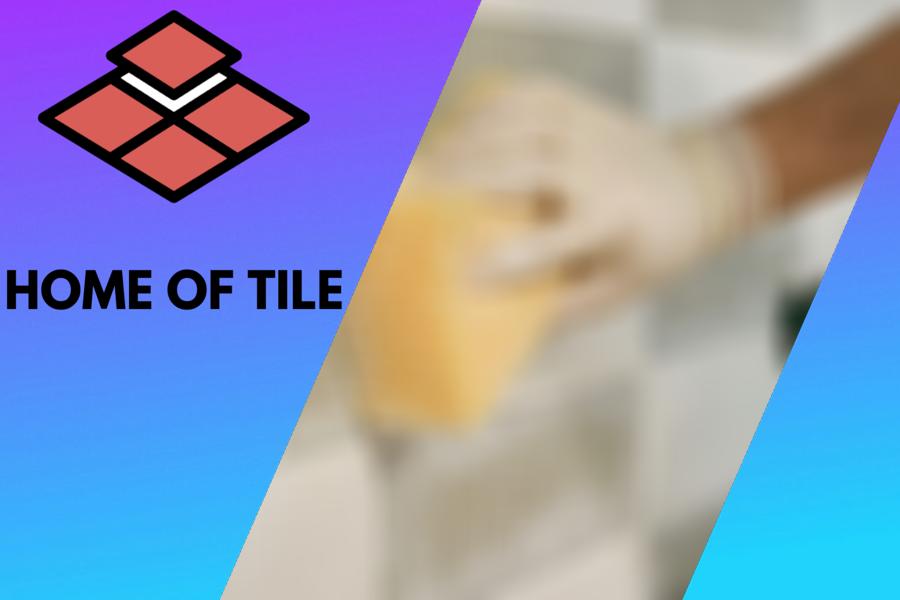The Ultimate Guide to Choosing Grout Removal
Are you tired of staring at that grimy, stained grout in your bathroom or kitchen? Don’t fret! My latest blog post, “Grout Rremover,” is here to rescue you from the eyesore! I will provide an in-depth guide to remove even the most stubborn grout stains, leaving behind a spotless and dazzling surface.
Grout remover:
Grout remover, an essential tool for tile installations, is designed to remove residue left after grouting. Available in chemical and mechanical forms, the right remover depends on factors such as tile type, project size, and personal preference. To use effectively, follow the manufacturer’s instructions, test on a hidden area, work in small sections, clean as you go, and seal the grout after removal.

Discover foolproof techniques to easily remove and replace old grout from your tiles, breathing new life into your surfaces. This comprehensive guide covers various methods, tools, materials, and insider tips to ensure long-lasting results. Dive into a cleaner, fresher space!
Contents
- 1 Grout Removal Tool
- 2 What is the Most Efficient Method for Grout Removal?
- 3 What Substances Can Effectively Dissolve Dried Grout?
- 4 What is the Most Effective Grout Removal Solution for Tile Surfaces?
- 5 Which Method is Most Effective for Removing Grout?
Grout Removal Tool
Grout remover, or grout haze or cleaner, is essential for anyone working with tile installations. It is designed to remove the hazy, hard-to-remove residue after grouting a tile surface.
I will discuss different types of grout removers, how to choose the right one for your project, and some tips and tricks for using them effectively.
• Types of Grout Remover
Several types of grout removers are available, each with its strengths and weaknesses. Let’s take a closer look at each type:
– Chemical Grout Removers
These products use a combination of acids and other chemicals to break down grout residue. They come in liquid, gel, or spray form and are applied directly to the grout haze.
Pros:
- Works quickly and effectively to remove grout haze
- Suitable for a wide range of tile surfaces, including natural stone
Cons:
- Can damage the tile surface if not used correctly
- Requires proper ventilation and care when handling
Recommendation: I recommend using chemical grout removers for stubborn haze or if you have a large area to cover. Follow the manufacturer’s instructions and always wear protective gear when handling these products.
– Mechanical Grout Removers
These tools use a blade or abrasive material to scrape away grout haze manually. Mechanical grout removers can be handheld or power tools like oscillating multi-tools with special attachments.
Pros:
- Provides more control when removing grout
- Does not involve chemicals, making it a safer option for sensitive surfaces
Cons:
- Can be time-consuming, especially for larger areas
- Requires more physical effort than chemical grout removers
Recommendation: Mechanical grout removers are best for small areas or delicate surfaces. When using these tools, be careful not to scratch the tile and take your time to achieve the best results.
• How to Choose the Right Grout Remover
When it comes to choosing the right grout remover for your project, consider the following factors:
– Type of Tile
Different types of tiles have different levels of tolerance for chemicals and abrasion. For example, natural stone tiles may be more prone to damage from harsh chemicals, and glazed tiles may scratch easily with abrasive tools. Always choose a grout remover that is suitable for your specific tile type.
– Size of the Project
The scale of your project will play a significant role in determining the best type of grout remover to use. If you have a large area, chemical grout removers will save you time and effort.
However, a mechanical grout remover will be sufficient if you only need to remove grout haze from a small area or specific spots.
– Personal Preference and Safety Concerns
Some people prefer to avoid using chemicals when possible, opting for mechanical grout removers instead. Additionally, a non-chemical grout remover may be the best choice for your health and safety if you have respiratory issues or are sensitive to strong fumes.
• Tips for Using Grout Remover Effectively
Here are some tried and tested tips for using grout remover effectively on your tile projects:
1. Follow the Manufacturer’s Instructions
Always read and follow the instructions the grout remover manufacturer provided regarding application methods, safety precautions, and cleanup procedures.
2. Test on a Hidden Area
Before using any grout remover product or tool, testing it on a hidden or inconspicuous area of the tile surface is a good idea. This will allow you to gauge its effectiveness and ensure it doesn’t cause any damage to the tile.
3. Be Patient and Work in Small Sections
Removing grout haze can be tedious, especially when using mechanical tools. It’s essential to be patient and work in small sections to avoid causing damage to your tiles or tiring yourself out.
4. Clean as You Go
When working with chemical grout removers, clean the treated area with water and a sponge immediately after the product has done its job. This will prevent any residue from hardening, making it more difficult to remove later.
5. Don’t Forget to Seal the Grout
After successfully removing the grout haze from your tiles, don’t forget to seal the grout. This will protect it from future staining and extend the life of your new tile installation.
In conclusion, a grout remover is essential for anyone working with tile installations. By understanding the different types of grout removers, choosing the right one for your specific tile type and project size, and following the tips above, you can achieve a clean, professional finish on your tiling project.
What is the Most Efficient Method for Grout Removal?
Grout is the material that keeps your tiles in place and fills the gaps between them. Over time, it can become discolored or deteriorate, making your tiled surface look less attractive. When this happens, it is essential to remove the grout properly to avoid damaging the tiles.
I will discuss the easiest and most effective ways to remove the grout and provide expert tips to make the process as smooth as possible.
• Tools and Materials Needed
Before we dive into the process of removing grout, let’s gather the necessary tools and materials:
- Grout removal tool or oscillating multi-tool with a grout blade
- Rotary tool with a carbide-grout bit (optional)
- Hammer and chisel (optional)
- Utility knife
- Bucket of water
- Sponge
- Soft-bristle brush
- Safety glasses
- Dust mask
- Gloves
• Choose the Right Grout Removal Tool
The easiest way to remove grout depends on the type of tools you use. Here are some popular options for grout removal:
– Grout Removal Tools
There are specialized tools for removing grout, known as grout removal tools or grout saws. These tools usually consist of a handle with a carbide-tipped blade that can scrape away the grout. Additionally, they feature a comfortable grip and a narrow blade to fit into tight spaces easily.
– Oscillating Multi-Tool
An oscillating multi-tool is another excellent option for removing grout. It can be fitted with a carbide- or diamond-coated grout removal blade, oscillating back and forth to break the grout apart.
Using an oscillating multi-tool for grout removal is an efficient way to avoid damage to your tiles and achieve precise results.
– Rotary Tool With Carbide-Grout Bit
Rotary tools, such as the popular Dremel tool, can also be used for grout removal when paired with a carbide-grout bit. When using a rotary tool, slowly and carefully work in a circular motion to grind away the grout.
– Hammer and Chisel
In some cases, a manual approach using a hammer and chisel may be necessary, especially when dealing with old and hard grout. However, this method increases the risk of tile damage and should only be used as a last resort.
• Step-by-Step Grout Removal Process
Once you have chosen the appropriate tool, follow these steps to remove the grout:
– Step 1: Prepare Your Work Area
First, clear the area of any decor, rugs, or other items that may hinder your work. Wear your safety glasses, dust mask, and gloves to protect yourself from flying debris and dust.
– Step 2: Start Removing Grout
Begin by testing your chosen grout removal tool on a small, inconspicuous area to ensure it does not damage your tiles. Once you are confident in your tool, start working on the main section of grout.
If using a manual grout removal tool, place the blade against the grout and apply gentle pressure, scraping back and forth until the grout loosens. For an oscillating multi-tool or rotary tool, turn on the device and gently apply it to the grout, guiding it along the grout line.
– Step 3: Work Slowly and Carefully
Patience is key. Work slowly and carefully to avoid damaging your tiles. Be mindful of the angle you hold the tool, ensuring it remains parallel to the tile surface.
– Step 4: Clean as You Go
As you remove the grout, use a soft-bristle brush to sweep away loose debris. Periodically dampen a sponge in the bucket of water and wipe down the tiles to remove dust, ensuring a clear view of your progress.
– Step 5: Finishing Touches
Once you have removed most of the grout, use a utility knife to clean up any remaining bits, not scratching the tiles. Do a final pass with the damp sponge to clean the area thoroughly.
• Expert Tips and Recommendations
To make your grout removal project even more manageable, consider these expert tips:
- Work in small sections: Removing grout can be time-consuming, so focus on small sections at a time to avoid feeling overwhelmed.
- Take breaks: Prolonged use of grout removal tools, especially power tools, can cause fatigue and increase the risk of injury. Take frequent breaks to rest your hands, clean the workspace, and reassess your progress.
- Don’t rush: Trying to remove grout too quickly can result in tile damage or an uneven finish. Work methodically and take your time for the best results.
• Conclusion
In conclusion, the easiest way to remove grout depends primarily on the tools you use and the methods you follow. By choosing the right tool for your needs, working slowly and carefully, and following our expert tips, you can remove grout effectively and efficiently, ensuring a clean and attractive result.
What Substances Can Effectively Dissolve Dried Grout?
As a professional with years of experience, I know that dealing with dried grout can be challenging for any DIY enthusiast or a seasoned expert. I will provide valuable insight into various methods to dissolve dried grout effectively and safely, ensuring a successful clean-up process.
The following sections will discuss techniques and recommendations for grout removal and safety precautions.
• Chemical Solutions to Dissolve Grout
There are various chemical solutions available in the market that can help dissolve and remove dried grout. Knowing the type of grout used for your project (sanded or unsanded) is essential before selecting the appropriate cleaning solution.
Below are some common chemicals that can be used for dissolving dried grout.
– Sulfamic Acid
Most commonly used for grout removal purposes, sulfamic acid is the primary ingredient found in commercial grout cleaners. It is an effective chemical for dissolving grout residue and stains.
I recommend mixing sulfamic acid with water according to the manufacturer’s instructions and then applying the solution using a sponge or a brush. Allow the solution to sit on the grout for approximately 15 minutes before scrubbing gently.
Rinse the area with clean water to remove any remaining chemical residue, and repeat the process if necessary.
– Vinegar and Baking Soda Solution
For milder grout stains, a homemade vinegar and baking soda solution can be quite effective. Mix equal parts of white vinegar and baking soda to create a paste. Apply the paste onto the grout lines and let it sit for approximately 15 to 20 minutes.
Using an old toothbrush, scrub the grout gently in a circular motion to help dissolve and lift the dried grout. Rinse the area with clean water and repeat the process if necessary.
• Mechanical Tools for Grout Removal
If chemicals are not sufficient or preferred for your project, several mechanical tools can make the grout removal process smoother and more efficient. These tools are incredibly useful, especially when dealing with stubborn dried grout, and can be rented from most hardware stores or purchased for personal use.
– Oscillating Multi-Tool
An oscillating multi-tool is an excellent choice for precise grout removal tasks, especially when dealing with delicate surfaces like glass or marble. The tool provides excellent control while removing dried grout without causing damage to adjacent tiles.
Use a grout removal blade attachment for your oscillating tool and carefully follow the grout lines to avoid chipping the tile edges.
– Grout Saw
A grout saw is a manual tool designed to remove dried grout, making it a great choice for smaller jobs. The saw has a comfortable grip handle and a serrated blade to remove grout without damaging the tiles.
Simply apply pressure on the grout lines while moving the saw back and forth to loosen and remove the dried grout.
• Safety Precautions
When working with any chemicals or tools, following safety precautions to avoid accidents or damage is essential.
- Always wear safety gear such as gloves, goggles, and a mask when working with chemical solutions or mechanical tools.
- Work in a well-ventilated area to avoid inhaling harmful chemical fumes.
- Follow instructions provided by the manufacturers of the chemicals and tools being used.
- When working with power tools, maintain a firm grip and keep your fingers away from the working area to avoid injury.
- Rinse any tools used for grout removal with water immediately after use to prevent corrosion or damage.
• Conclusion
Dissolving dried grout can be challenging but achievable with the right knowledge, tools, and chemicals. Remember to consider the type of grout and tile material in your project before selecting the appropriate cleaning solution or mechanical tool.
Moreover, always follow safety precautions to ensure a successful and accident-free grout removal process.
What is the Most Effective Grout Removal Solution for Tile Surfaces?
Grout removal from tiles is essential for maintaining a clean and polished appearance and for prolonging your tiles’ life. Over time, grout can become dirty, discolored, or even damaged, requiring proper care and maintenance.
One of the most important aspects of maintaining the pristine appearance of your tiled surfaces is using the best grout remover available. I will discuss some of the top grout removal tools and techniques, so you can keep your tiles looking their best.
• Top Chemical Grout Removers
Chemical grout removers are formulated to soften and dissolve grout, making removing it easier. Here are some of the best chemical grout removers available on the market:
1. HG Grout Cleaner
HG Grout Cleaner is a powerful and effective remover that can be used on all grout lines. It is specially formulated to easily remove stubborn dirt, grime, and even grease from grout lines. The concentrated formula requires dilution before application and does not damage the tile surface.
It is recommended to use this product in combination with a grout brush or scrubbing sponge for effective results.
2. Zep Grout Cleaner and Whitener
Zep Grout Cleaner and Whitener is another popular chemical grout remover that removes grime, dirt, and stains and whitens grout lines. This product can be used on white grout lines for ceramic, porcelain, or natural stone tiles.
It is a ready-to-use product that does not require dilution and is applied directly onto the grout lines with a grout brush or scrubbing sponge.
• Top Manual Grout Removal Tools
Manual grout removal tools is an alternative solution for those who prefer not to use chemical grout removers. Here are some of the best manual tools available:
1. Grout Saw
A grout saw is a small, handheld tool designed for removing grout. It has a blade or serrated edge capable of cutting through dense grout. Grout saws are ideal for removing small amounts of grout or for repairing damaged grout lines. Always use caution when using a grout saw to avoid damaging the tile.
2. Grout Rake
A grout rake is another handheld tool designed for removing grout. It features a long handle and a metal blade capable of scraping away the grout. This tool is especially effective when removing grout from larger areas or joints with a wider grout line.
• Top Power Grout Removal Tools
For extensive grout removal projects, power tools can speed up the process. Here are some of the best power grout removal tools available:
1. Oscillating Multi-Tool with Grout Removal Blade
An oscillating multi-tool is a versatile power tool that can be used for various tasks, including grout removal. Attaching a grout removal blade to the multi-tool can be used to remove grout quickly and efficiently.
This method is especially effective for removing large amounts of grout or from hard-to-reach areas. It is recommended to use a carbide or diamond-tipped grout removal blade for the best results.
2. Electric Grout Remover
An electric grout remover is a specialized power tool designed to remove grout. It features a rapid motorized scraping blade, allowing for quick grout removal. These tools often have adjustable speed settings and depth control, so you can remove the grout precisely and without damaging the tile.
• Tips for Effective Grout Removal
Here are some additional tips and tricks to help you achieve the best grout removal results:
- Always test the grout removal product or technique in an inconspicuous area before using it on a larger or more visible area.
- When using chemical grout removers, follow the manufacturer’s instructions carefully and wear gloves to protect your skin.
- Apply even pressure when using manual grout removal tools, and avoid applying excessive force as it can damage the surrounding tile.
- Frequently clean the grout removal tool, as accumulated grout residue can decrease effectiveness.
- After removing the grout, thoroughly clean the tile surface and grout lines before applying the new grout.
In conclusion, selecting the best grout remover from a tile depends on the type of grout being removed, the size of the area, and personal preference. By considering the options listed above and following the provided tips, you can successfully remove grout from your tiles and maintain their pristine appearance.
Grout Remover | Description |
|---|---|
Grout Eater | A specialized tool with a durable carbide blade designed to efficiently remove old grout from tile joints. |
Oscillating Multi-Tool | A manual tool with a carbide or diamond-coated blade used to remove grout from tile joints by hand. |
Rotary Tool with Grout Removal Blade | A high-speed handheld tool with a diamond-coated grout removal blade that can be used to remove grout from tile joints. |
Grout Removal Hand Tool | A manual tool with a carbide or diamond-coated blade, used to remove grout from tile joints by hand. |
Grout Dissolver | A chemical solution made to dissolve grout and make it easier to remove from tile joints. |
Which Method is Most Effective for Removing Grout?
Grout is essential in tile installations, as it fills the gaps between tiles, protects tiles from damage, and enhances the overall appearance of your tiled surfaces.
However, grout can become stained, discolored, or cracked over time, necessitating removal and replacement. Let’s explore various grout removal techniques and suggest some of the best tools for the job.
• Why Grout Removal is Necessary
There are several reasons why grout removal might be necessary:
- Aesthetic Improvement: Discolored or stained grout can affect the overall appearance of your tiled surfaces, making them look dirty or poorly maintained.
- Structural Integrity: Cracked, damaged, or deteriorating grout can compromise the structural integrity of your tile installation, potentially leading to loose or damaged tiles.
- Preparation for Re-grouting: Removing the old grout is an essential first step if you need to re-grout your tiled surface.
• Manual Grout Removal Techniques
Manual grout removal techniques require some elbow grease but can be quite effective if done properly. Here are a few recommended methods:
– Utility Knife or Grout Saw
A utility knife or grout saw can be a simple and effective tool for removing grout. Start by cutting a shallow groove around the perimeter of the tile, moving carefully to avoid damaging the tile itself. Then, scrape the remaining grout using the utility knife or grout saw.
Be patient and take your time, as rushing can lead to tile damage or personal injury.
– Grout Rake
A grout rake is a small, handheld tool designed specifically for grout removal. It features a metal blade with a serrated edge for scraping away the grout. With this method, you may require more elbow grease, but it’s preferred for those who want to avoid power tools and their associated risks.
• Power Tools for Grout Removal
Power tools can significantly speed up grout removal and minimize physical effort. However, they can also increase the risk of tile damage if not used carefully. Here are some popular choices:
– Oscillating Multi-Tool
An oscillating multi-tool with a grout removal blade is popular and versatile. This tool allows you to remove grout quickly and efficiently while giving you control over the process.
Using an oscillating multi-tool, move the blade back and forth, carefully guiding it along the grout lines.
I recommend using a carbide or diamond-edged blade for better durability and effectiveness, as these blades can cut through even the toughest grout.
– Rotary Tool with Grout Removal Attachment
A rotary tool, such as a Dremel, equipped with a grout removal attachment can also be an effective method for removing grout. This tool spins quickly, allowing you to quickly and efficiently remove grout between tiles.
Choose the appropriate bit for your grout line width, and ensure you wear safety goggles and a dust mask to protect yourself from debris while using this method.
• Grout Removal Safety Tips
Regardless of the technique or tool you choose, always keep the following safety tips in mind when removing grout:
- Wear Appropriate Safety Gear: This includes goggles, gloves, and a dust mask to protect yourself from grout dust and debris.
- Work in a Well-Ventilated Area: This will help to minimize dust inhalation and promote a safer working environment.
- Take Breaks and Stay Hydrated: Grout removal can be physically demanding, especially manual methods. Be sure to take breaks and stay hydrated to avoid overexertion or injuries.
• Final Thoughts on Grout Removal
The best method for removing grout largely depends on your preferences, budget, and comfort level with power tools. Remember that grout removal can be time-consuming and labor-intensive, so be prepared to dedicate a significant amount of time and effort to the task.
Ultimately, the goal is to remove old, damaged, or discolored grout in a way that is safe, efficient, and minimizes the risk of damage to your tile surfaces. By selecting the appropriate tools and techniques for your situation, you can successfully remove the grout and prepare your tiled surfaces for re-grouting or other necessary repairs.
Method | Effectiveness | Ease of Use |
|---|---|---|
Grout removal tool (manual) | Effective | Requires moderate effort |
Oscillating tool with grout removal attachment | Highly effective | Easy to use, but may require some experience |
Utility knife | Less effective | Risk of injury if not used with caution |
Chemical grout remover | Effective | Easy to use, but needs proper ventilation and handling |
Steam cleaner | Effective for thin or light grout | Easy to use, but may require multiple passes |








